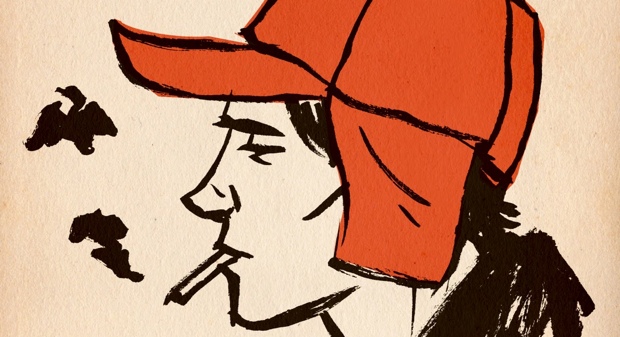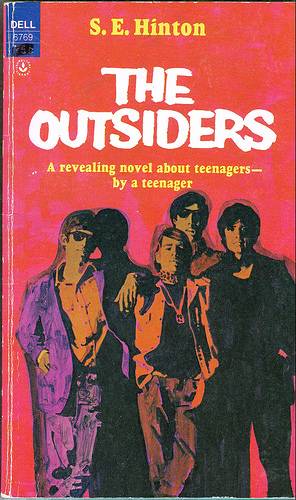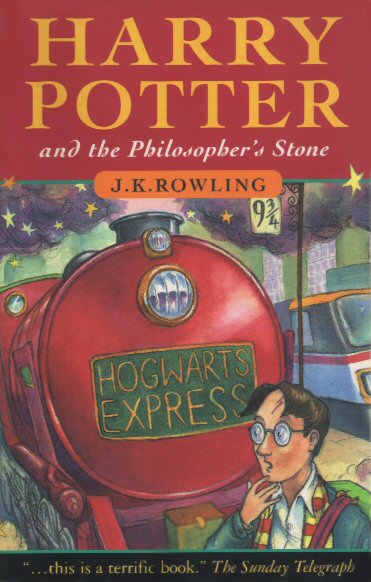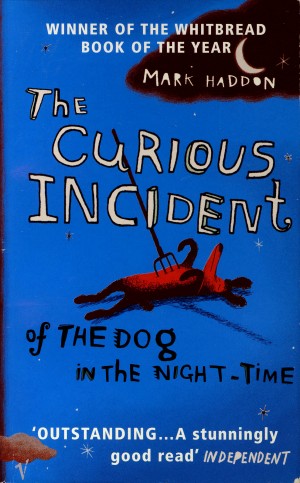You have no items in your cart. Want to get some nice things?
Go shoppingThe young adult fiction market is huge, spawning book series, films, stars and franchises, and more than half its fans are apparently over 18. Eleanor Pender investigates the origins of the YA phenomenon in the decades after the second world war.

There comes a time as young readers when we move away from the children’s section, driven by a search for something more. When I was a teenager, I didn’t know what the stuff I was looking for was called, but I certainly knew it when I found it, in the work of writers like Tamora Pierce, Ursula Le Guin and JRR Tolkien. When I’m asked now about the authors I read as a child, my first thoughts are of those books I discovered in my early teens.
What we now call teen or Young Adult fiction, has come a long way in a short period of time. From 60 years ago, when fiction written specifically for a teenage audience simply didn’t exist, YA fiction has become a multi-million pound global section of the publishing industry.
YA fiction is a new slice of literature, emerging not long after teenagers became accustomed to newfound freedoms following the second world war. As teens demanded to be entertained on their own terms, novels emerged that began to fill the void between children’s fiction and adult fiction.
The Invention of the Teenager
In the early 1950s, writers like JD Salinger and William Golding were some of the first to attempt realistic depictions of teenagers, exploring themes of angst and alienation in The Catcher in the Rye, and human nature and individual welfare in Lord of the Flies. But these were books aimed at adults, not fiction written specifically for young people.
 The first young adult fiction novel as we think of it today was The Outsiders, written in 1967 by SE Hinton, a 17 year old Oklahoma school girl who reportedly wrote the novel in response to her own frustrations at how school life was being depicted in literature at the time. Hinton’s work was unique: about teenagers, by a teenager, for teenagers. Whether she had anticipated the novel’s reception or not, the fact that a girl of her age had written a novel containing strong scenes of violence, gang warfare, underage drinking and smoking fuelled a negative reaction to its publication. It was ranked number 38 on the American Library Association’s Top 100 Most Frequently Challenged Books of 1990–1999. The book was banned from some schools and libraries because of the controversial themes as well as its use of slang and family dysfunction. Hinton continued her success with That Was Then, This Is Now in 1971 and Rumble Fish four years later in 1975, with all three novels going on to be made into films in the early 1980s.
The first young adult fiction novel as we think of it today was The Outsiders, written in 1967 by SE Hinton, a 17 year old Oklahoma school girl who reportedly wrote the novel in response to her own frustrations at how school life was being depicted in literature at the time. Hinton’s work was unique: about teenagers, by a teenager, for teenagers. Whether she had anticipated the novel’s reception or not, the fact that a girl of her age had written a novel containing strong scenes of violence, gang warfare, underage drinking and smoking fuelled a negative reaction to its publication. It was ranked number 38 on the American Library Association’s Top 100 Most Frequently Challenged Books of 1990–1999. The book was banned from some schools and libraries because of the controversial themes as well as its use of slang and family dysfunction. Hinton continued her success with That Was Then, This Is Now in 1971 and Rumble Fish four years later in 1975, with all three novels going on to be made into films in the early 1980s.
In 1974, Robert Cormier’s The Chocolate War came on the scene. He was the first adult writer of a young adult fiction novel. Cormier focused on the isolated individual actively choosing not to conform, and explored common modern-day themes of peer pressure, isolation, bullying and independence. The book also became a target for censorship, and is up at number 3 on the American Library Association’s top 100 most challenged books. But Hinton and Cormier’s efforts to blow away the taboos of what could be written for young people had opened new possibilities for writers.
Different Worlds
The early 1970s saw a wide range of new writing create a bridge between children’s and young adult fiction. Though initially published in the early 1950s, the impact of JRR Tolkien’s The Lord of the Rings was long-reaching. Middle Earth opened doors and inspired the beginnings of the fantasy children’s novel. Ursula Le Guin was one such inspired writer. Her acclaimed young adult fantasy fiction series, Tales from Earthsea starting with the first novel A Wizard of Earthsea, was published in 1968, with a further five works in the series, the most recent in 2001.
Tolkien and Le Guin’s writing created a new genre and paved the way for later writers like Philip Pullman and Garth Nix. First published as a children’s novel, it was Philip Pullman’s Dark Materials Trilogy that pushed boundaries further. His wonderfully vivid coming-of-age tale, set in a fantastical background of worlds within worlds, prompted interest from adult readers and was considered a serious literary contender by critics. The third novel in the trilogy, The Amber Spyglass, was the first children’s novel to be on the Booker Prize longlist.
 Adults Catch On
Adults Catch On
Of course, perhaps the best-known fantasy series of recent years, one that reached incredible levels of success, is Harry Potter. J.K. Rowling showed the world that books written for children can be enjoyed by all ages, and proved to critics, reviewers and publishers that young adult fiction and children’s fiction were as valid as adult fiction. There is strong evidence that Mr Potter’s success contributed to the present popularity of fantastical and dystopian series The Hunger Games from Suzanne Collins and also Veronica Roth’s Divergent trilogy. For those who like to hunt out source material ahead of new films, the latest fantastical book due for release this summer is set to be Cassandra Clare’s The Mortal Instruments, a story about a family of demon hunters living in plain sight in modern day New York.
Stories have to be strong to keep young adult readers interested, so writers often choose to address more controversial topics that may directly affect their readers’ own lives. In the last decade, Yong Adult writers have begun to address new social taboos and issues. Melvin Burgess’s renowned novel Junk takes an open and honest approach it takes about drugs and the drug culture. With two 14 year old characters as lead protagonists, Junk is considered to be the first young adult fiction novel that openly addresses the lifelong consequences of hard drug addiction. When it came out in 1996, the novel went on to win the Carnegie Medal and the Guardian Children’s Fiction Award despite protests from some conservative critics.
 The 21st Century
The 21st Century
Other hugely successful recent YA novels include The Curious Incident of the Dog in the Night-time by Mark Haddon. Published in 2003 and now a hit West End play, the novel’s first person narrator has Aspergers syndrome, and sees the world in a surprising and revealing way. Alistair McGowan took a fresh and comic approach to the difficult subject of cancer in Henry Tumor, the tale of young Hector who in addition to being a teenager has to deal with his talking tumor, Henry. Sherman Alexie explored the struggle to survive between the grinding plates of the Indian and white worlds in The Absolutely True Diary of a Part-Time Indian, in which 14 year old Arnold is forced to go to a white school away from his reservation. Keith Gray’s extraordinary novel about friendship, loss and grief, Ostrich Boys, tells the tale of three friends who set off on an adventure with a stolen urn containing the ashes of their best friend. Patrick Ness ties multiple themes of survival, coming of age, family, friendship, love, war and consequence together in the fabulous The Knife of Never Letting Go, the first in his Chaos Walking young adult series, while Cat Clarke deals with issues of self harm and sexual orientation in her latest novel, entangled published earlier this year.
Salinger and Cormier, Tolkien and Rowling, Burgess and Haddon; there have been many names who have contributed to the current huge popularity and strong identity of young adult fiction. Malorie Blackman, recently appointed Children’s Laureate, is the first young adult fiction author in the post. She is a fabulous spokesperson for young adult fiction, now with a bigger and better platform. If you haven’t read her Noughts and Crosses I highly recommend you hunt for one in your local library or bookshop.
Of course, if you’re interested in reading more young adult fiction, go on and check out one of the many novels I’ve mentioned. With more young adult book groups springing up every week, there is little taboo associated with adults reading young adult fiction. You won’t be in the minority – recent studies show that 55% of young adult fiction is purchased by readers over 18 years of age!

About Eleanor Pender
An avid film and literature fan, Eleanor has knowledge ranging from Charles Dickens to Rian Johnson. She has reviewed film, theatre, TV and books since 2008 in alternative e-zine, Push To Fire to Edinburgh Festival Fringe paper, ThreeWeeks. She has lived in Durham, Liverpool, Manchester, Edinburgh and Bristol. She is currently working on her first young adult fiction novel.





From The Outsiders to The Hunger Games – the rise of young adult fiction since the second world war https://t.co/Qp5LiiuqcL
The Rise of Young Adult Fiction | Litro https://t.co/RAW8T6tDo3